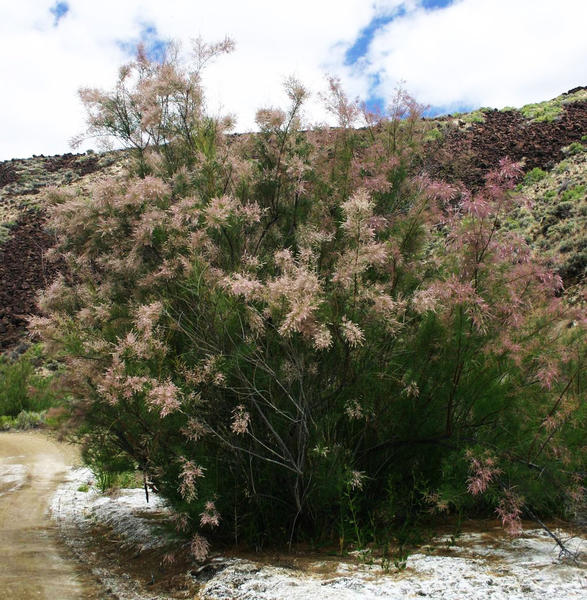"All species are facultative phreatophytes that can use both surface and groundwater. The presence of numerous trees along riparian corridors or around desert springs can seriously reduce underground water tables and surface water availability, drying up wetlands, and reducing flows. Roots extract salts from deep soil layers and excrete it from the leaves. Salt is deposited on the soil surface with the leaf litter. The increased salinity of the upper soil profile inhibits the growth, survival, and recruitment of desirable native vegetation. Although some animals will seek cover or nest in Tamarix thickets, most wildlife does not consume Tamarix foliage, fruits, or seeds. Tamarix species can increase flooding in riparian areas by narrowing channel width. In addition, the plants are flammable and can introduce fire into wetland and riparian communities that are not adapted to periodic burning." (DiTomaso, J.M., G.B. Kyser et al. 2013. Weed Control in Natural Areas in the Western United States. Weed Research and Information Center, University of California. 544 pp.)
Tamarisk, Tamarix ramosissima
Non-Native

